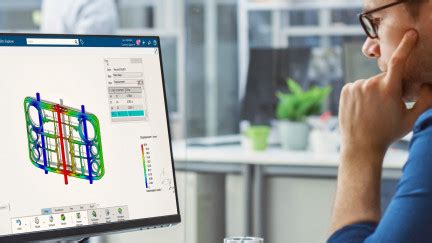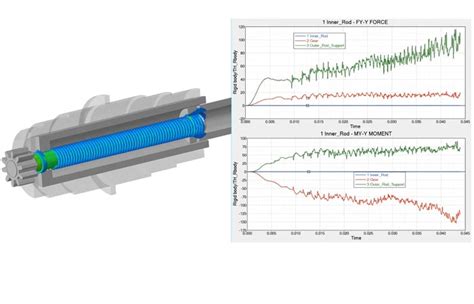Introduction to Virtual Prototyping
Virtual prototyping is a modern approach to product development that leverages computer-aided design (CAD) software and simulation tools to create digital representations of products before they are physically manufactured. This technology allows engineers and designers to test, refine, and optimize their designs in a virtual environment, reducing the need for physical prototypes and saving time and resources in the process.
Benefits of Virtual Prototyping
- Cost Savings: By minimizing the need for physical prototypes, virtual prototyping can significantly reduce the costs associated with product development.
- Time Efficiency: Virtual prototyping allows for faster iteration and optimization of designs, as changes can be made and tested quickly in a digital environment.
- Improved Product Quality: With the ability to simulate and analyze product performance in various scenarios, virtual prototyping can help identify and address potential issues early in the development process, resulting in higher-quality final products.
Traditional Product Development Methods
Traditional product development methods rely heavily on physical prototyping, where designers create tangible models of their products to test and refine their designs. This process typically involves several stages, including conceptualization, sketching, CAD modeling, and physical prototyping.
Limitations of Traditional Methods
- High Costs: Creating physical prototypes can be expensive, especially when multiple iterations are required.
- Time-Consuming: The process of building and testing physical prototypes can be lengthy, slowing down the overall product development timeline.
- Limited Testing Scenarios: Physical prototypes may not be able to simulate all possible operating conditions or environments, limiting the scope of testing and validation.

Comparing Virtual Prototyping and Traditional Methods
To better understand the differences between virtual prototyping and traditional product development methods, let’s compare them across several key aspects:
| Aspect | Virtual Prototyping | Traditional Methods |
|---|---|---|
| Cost | Lower costs due to reduced need for physical prototypes | Higher costs associated with creating and testing physical prototypes |
| Time | Faster iteration and optimization of designs | Longer development cycles due to physical prototyping |
| Testing | Ability to simulate and analyze product performance in various scenarios | Limited testing scenarios based on physical prototypes |
| Collaboration | Easier collaboration among team members, as digital models can be shared and accessed remotely | Collaboration may be more challenging, as physical prototypes need to be shared and transported |
| Design Flexibility | Greater flexibility to explore and refine designs in a digital environment | Design changes may be more time-consuming and costly to implement with physical prototypes |
Case Studies
-
Automotive Industry: Many automotive manufacturers have adopted virtual prototyping to streamline their product development processes. For example, Ford Motor Company uses virtual reality technology to design and test vehicle interiors, reducing the need for physical prototypes and allowing for faster iteration and optimization of designs.
-
Aerospace Industry: Virtual prototyping has become increasingly important in the aerospace industry, where the cost and complexity of physical prototyping can be prohibitive. Companies like Boeing and Airbus use virtual prototyping to design and test aircraft components, systems, and entire airframes, enabling them to identify and address potential issues early in the development process.

Challenges and Limitations of Virtual Prototyping
While virtual prototyping offers numerous benefits, there are also some challenges and limitations to consider:
- Initial Investment: Implementing virtual prototyping technology can require a significant upfront investment in software, hardware, and training.
- Learning Curve: Engineers and designers may need to acquire new skills and knowledge to effectively use virtual prototyping tools and techniques.
- Validation: While virtual prototyping can provide valuable insights, physical testing may still be necessary to fully validate product performance and ensure compliance with industry standards and regulations.

Future of Virtual Prototyping
As technology continues to advance, virtual prototyping is expected to play an increasingly important role in product development across various industries. Some key trends and developments to watch include:
- Integration with Additive Manufacturing: Virtual prototyping can be combined with additive manufacturing (3D printing) to create rapid, low-cost physical prototypes when necessary.
- Augmented and Virtual Reality: The use of augmented reality (AR) and virtual reality (VR) technologies can enhance the virtual prototyping experience, allowing for more immersive and interactive design and testing.
- Artificial Intelligence and Machine Learning: The integration of AI and machine learning algorithms can help automate and optimize the virtual prototyping process, enabling faster and more efficient product development.
Conclusion
Virtual prototyping represents a significant advancement in product development, offering numerous benefits over traditional methods. By leveraging digital tools and technologies, companies can reduce costs, accelerate development cycles, and improve product quality. As virtual prototyping continues to evolve and mature, it is likely to become an increasingly essential part of the product development landscape.
Frequently Asked Questions (FAQ)
-
What industries can benefit from virtual prototyping?
Virtual prototyping can be applied across a wide range of industries, including automotive, aerospace, consumer goods, medical devices, and more. Any industry that involves product design and development can potentially benefit from virtual prototyping technology. -
How does virtual prototyping impact product quality?
Virtual prototyping allows for more extensive testing and validation of product designs in a digital environment. By simulating various operating conditions and scenarios, engineers can identify and address potential issues early in the development process, resulting in higher-quality final products. -
Is virtual prototyping a complete replacement for physical prototyping?
While virtual prototyping can significantly reduce the need for physical prototypes, it may not completely replace them in all cases. Physical testing may still be necessary to fully validate product performance and ensure compliance with industry standards and regulations. -
What skills are required to effectively use virtual prototyping tools?
To effectively use virtual prototyping tools, engineers and designers typically need a strong foundation in CAD software, as well as knowledge of simulation and analysis techniques. Familiarity with programming languages and data analysis may also be beneficial, depending on the specific tools and applications used. -
How can companies justify the initial investment in virtual prototyping technology?
While implementing virtual prototyping technology can require a significant upfront investment, the long-term benefits can often justify the costs. By reducing the need for physical prototypes, accelerating development cycles, and improving product quality, virtual prototyping can lead to significant cost savings and competitive advantages over time. Companies should carefully evaluate their specific needs and potential return on investment when considering the adoption of virtual prototyping technology.

No responses yet